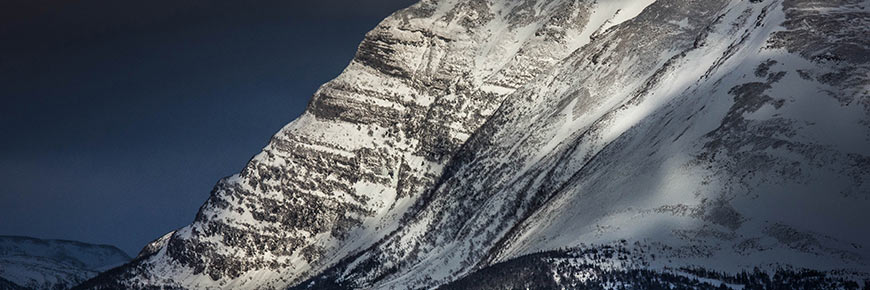
Geology
Gros Morne National Park
Gros Morne National Park of Canada
The Story in Stone
The rocks of Gros Morne National Park and adjacent parts of western Newfoundland are world-renowned for the light they shed on the geological evolution of ancient mountain belts. The geology of the park illustrates the concept of plate tectonics, one of the most important ideas in modern science.
This is one of the main reasons why Gros Morne National Park has been designated a World Heritage Site by UNESCO (the United Nations Education, Scientific and Cultural Organization).

An Ancient Mountain Range and A New Ocean
Around 1,200 million years ago, in the Precambrian era, the ancient core of what is now eastern North America collided slowly with another continent to form a vast mountain range. All that remains today are the deeply eroded granites and gneisses of the Long Range mountains.
In late Precambrian time, the supercontinent began to break apart. As it split, steep fractures formed and filled with molten rock from below. This magma cooled into the diabase dykes seen in the cliffs of Western Brook Pond and Ten Mile Pond.
By 570 million years ago the continent finally rifted apart, and the resulting basin became an ocean called the Iapetus Ocean. Some of the rocks of Gros Morne National Park were part of the continental margin on the western side of this new ocean, south of the Equator.

A Tropical Continental Margin
Over the next 100 million years, during the Cambrian and Ordovician periods, ancient North America and what is now Gros Morne National Park drifted northward. Sediment eroding from the North American continent washed into the Iapetus Ocean and accumulated offshore as a broad continental shelf.
The first sediments were sands and silts deposited in shallow water. These sediments are now the quartzites that cap Gros Morne Mountain and directly overlie the ancient granites and gneisses. Sediment supply decreased, and carbonate banks flourished in the shallow tropical waters as the calcareous remains of snails, brachiopods, trilobites and algal mats accumulated. These remains of ancient organisms form the park's extensive sequences of limestone and dolomite.
Near the edge of this ancient tropical shelf, currents caused some sediment to be deposited into deeper water as debris flows. This material washed down the continental slope and formed coarse sandstone. Occasionally, overloading, by earthquakes or by storms triggered submarine landslides. These landslides toppled thousands of tonnes of limestone from the edge of the continental shelf and deposited the rubble on the continental slope. Eventually this rubble cemented together to form limestone breccia (a type of conglomerate) and shales.
Ocean Crust Continues to Form
About 500 million years ago the Iapetus Ocean began to close along a subduction zone far to the east. There, the edge of one oceanic plate was drawn down beneath another. Some of this oceanic crust became trapped within the subduction zone where it was deformed and metamorphosed.
As the Iapetus Ocean closed, new oceanic crust developed when magma from the Earth's mantle welled upwards to form peridotite and dunite followed by gabbro. The transitional contact zone between them represents the base of the ancient ocean crust. Western Newfoundland is one of the few places on Earth where this boundary, the Mohorovicic Discontinuity, and the upper mantle can be studied directly.
Above the crust-mantle boundary are several layers of oceanic crust. The lowermost layer is gabbro, but not all of the molten rock cooled into gabbro. Some was forced upward where it filled steep, parallel cracks and became "sheeted dykes" of diabase and fed lava flows that cooled on the ocean floor as pillow basalt.
Although these dykes are similar in composition to those that cut the Precambrian rocks, they are much younger. Together this sequence of peridotite, gabbro, sheeted dykes, and pillow basalt is known as an ophiolite, and represents a complete slice of the Iapetus sea-floor.
An Ophiolite is Emplaced
As subduction continued, the Iapetus Ocean finally closed around 475 million years ago. Some of the still-hot ophiolite was shoved on top of the down-going crustal slab, incorporating with it pieces of fresh sea-floor lava. The ophiolite slab was then thrust slowly over the continental margin. The trail of this slowly moving slab of ophiolite is marked by green sandstone and mélange -layers of crushed rock embedded in a shaley matrix.
The final rocks to form were shales made up of mud and other sediments shed from the overthrust oceanic rocks.
Aftermath
Since the Devonian the rock assemblage of the park has remained relatively stable except for erosion, uplift and some slight shifting along faults. The last two-million years of repeated glaciation, deglaciation, and associated sea-level changes shaped the park scenery that we see today.
Related links
- Date modified :